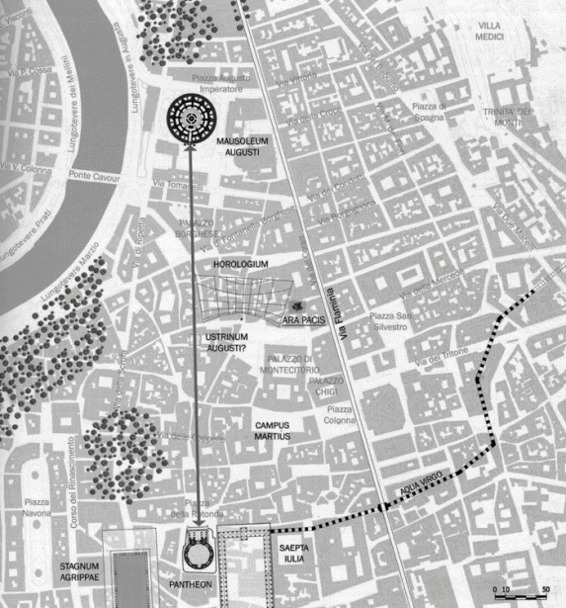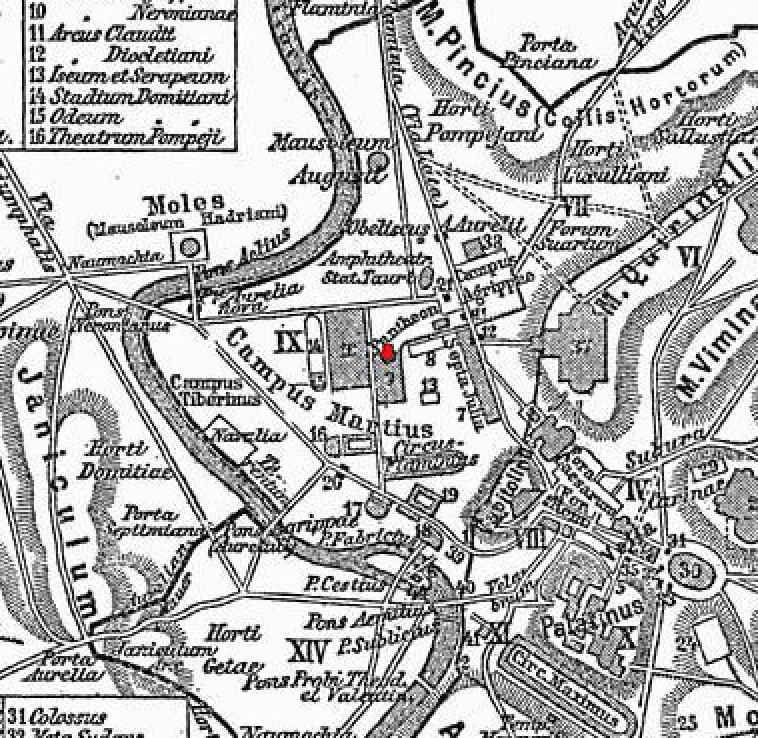Location

The map shows the direct, linear connection between the mausoleum of Augustus and the Pantheon, with the Ara Pacis (which Augustus also commissioned) at the midway point between the two.
Recent excavations have shown that the current Pantheon still stands in its original location in the Campus Martius, a flood plain of the Tiber River that was consecrated to the Roman god of war, Mars.1 According to legend, the marshy terrain was the site of Romulus’s (Rome’s eponymous founder) ascension into the heavens.2 In ancient Rome, the Campus Martius was used as a training area for soldiers, but quickly morphed as public buildings filled the urban landscape.3 Despite the fall and gradual decay of Rome post-antiquity, the Campus Martius maintained its historic importance and dense population throughout history. Its unfortunate landscape, however, was prone to natural disasters, frequent flooding, and rising ground levels that partially buried several monuments.
Agrippa’s choice of location also suggests a potential link between the Pantheon and its dedicatory intent. Since emperor Augustus’s mausoleum and the Pantheon were completed around the same time, those involved with both constructions were undoubtedly aware of each other.3 The direct, linear relationship between the two monuments suggest that they were, in fact, linked. Augustus’s other project, the Ara Pacis Augustae (Altar of Peace), was also at the half-way point of the mausoleum and Pantheon.
Currently, the area directly surrounding the Pantheon is called the Piazza della Rotonda, named after the monument. Over the years, the Pantheon gradually settled among the many buildings that line the perimeter of the piazza today. The Fontana del Rotonda and an Egyptian obelisk were later added to the center of the square, directly in front of the Pantheon.
1 Amanda Claridge, Rome: An Oxford Archaeological Guide, (Oxford: Oxford UP, 2010), 197.
2 Eugene La Rocca, "Agrippa's Pantheon and its Origin," in The Pantheon, ed. Marder and Jones, (New York, NY: Cambridge UP), 57.
3 Claridge, Rome, 197.
3 La Rocca, "Agrippa's Pantheon and its Origin", 76.
